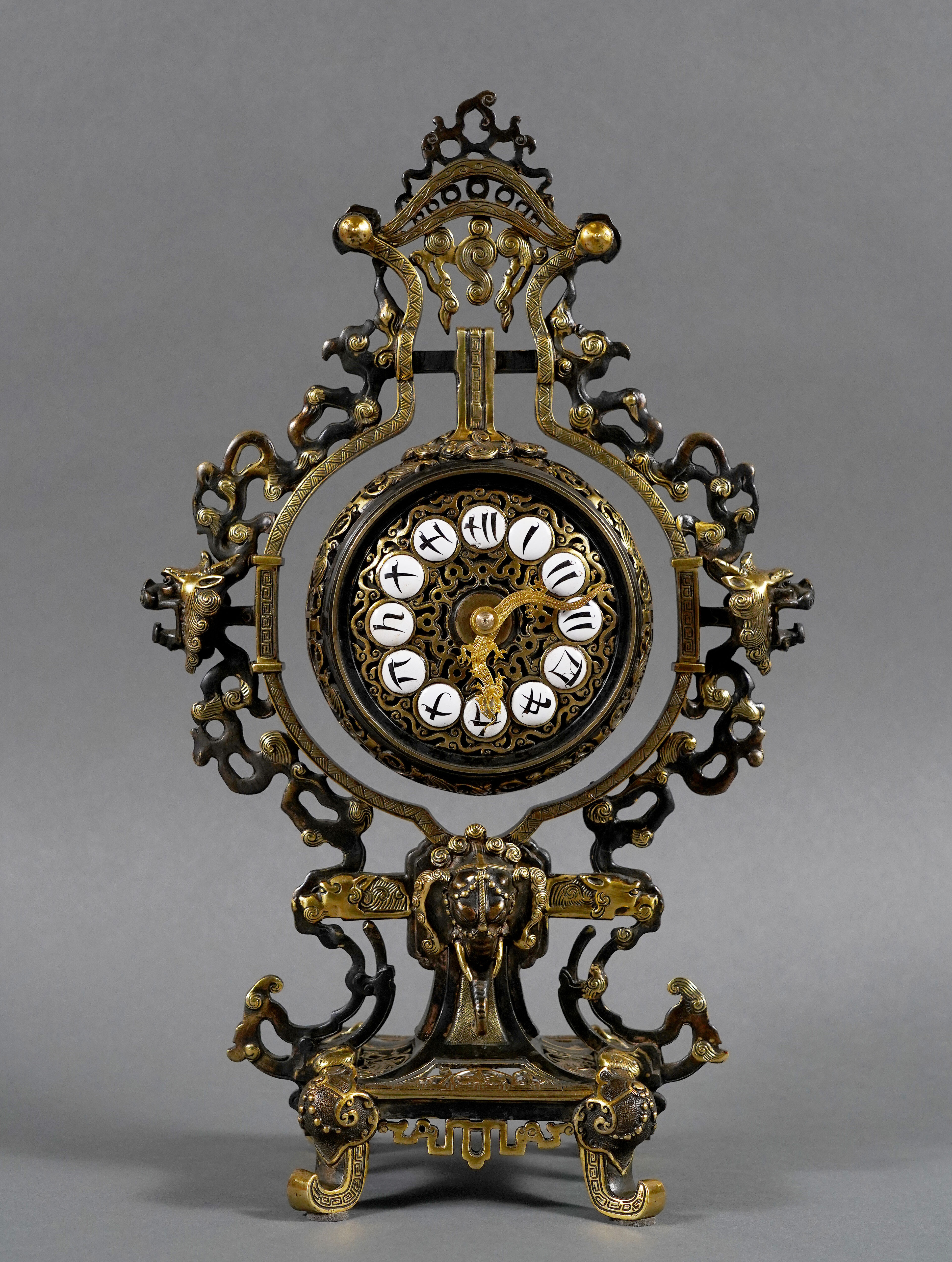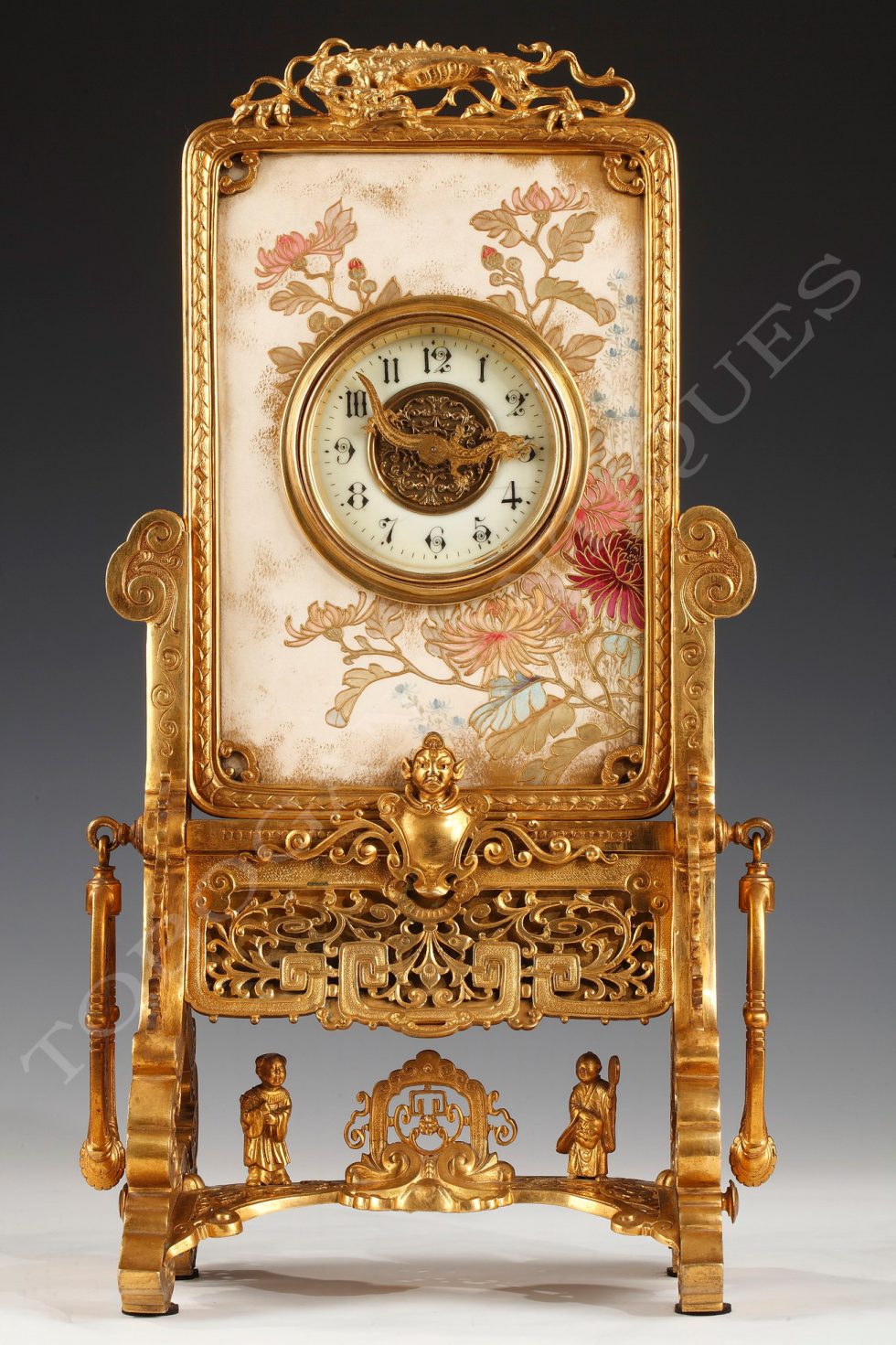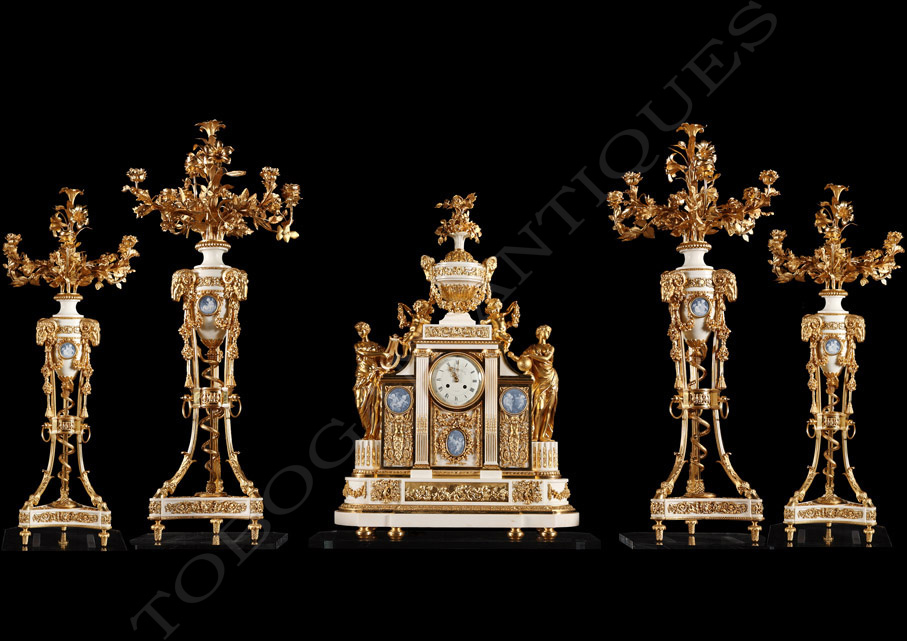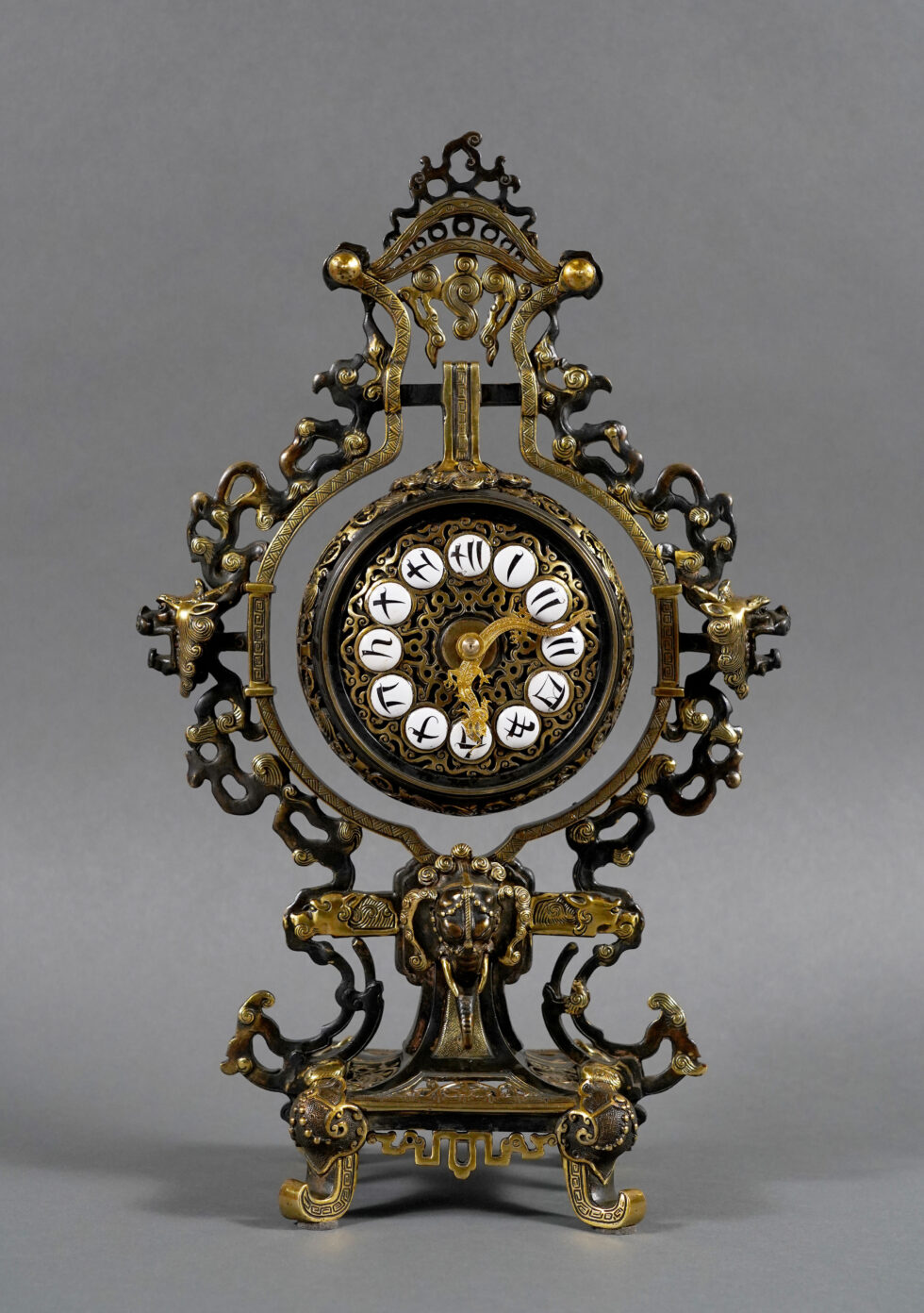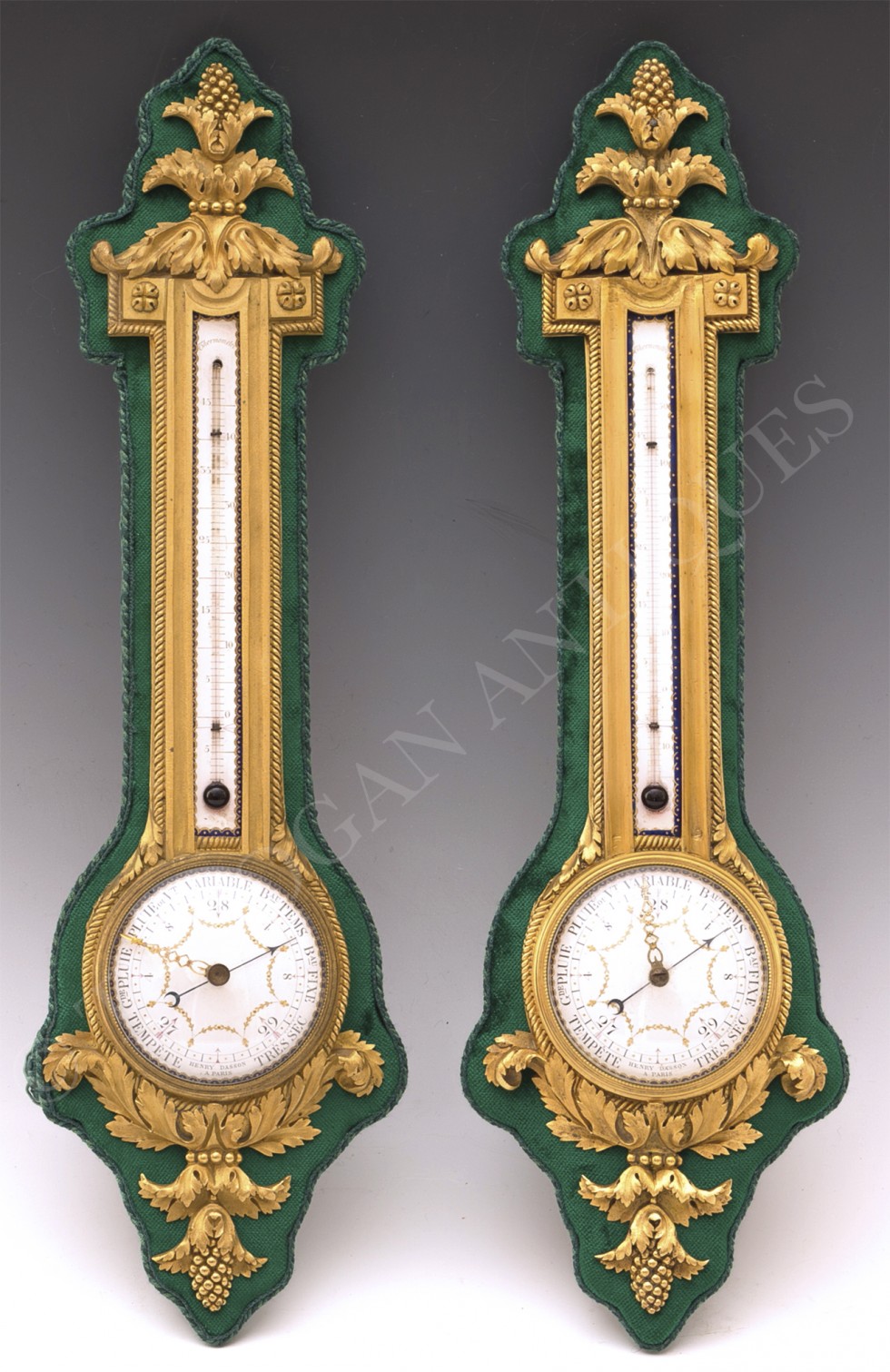Ref. 113
L’Escalier de Cristal
Designer & Art Object-Editor
(attributed to)
Japanese style Clock with Openwork Decoration
France
Circa 1885
Double patina Bronze, Enamel
Height : 42,5 cm (16,7 in.) ; Width : 27 cm (10,6 in.) ; Depth : 15,5 cm (6,1 in.)
Rare Japanese clock in double patina bronze with suspended dial.
The portico and dial, with calligraphic Kanji numerals complemented by hands featuring an undulating dragon, are decorated with clouds with dragon heads and sacred pearls.
The whole is set on a base with four scrolled feet, enriched with foliage and adorned with an elephant’s head.
Related Work
Our hanging dial clock is a variation on the Tam-Tam clock designed in Henry Pannier’s blue notebook and described as “Pendule Tam Tam pâte tendre flambeaux 3 lumières (Schlomach)”.
Biography
“L’Escalier de Cristal”, an old and famous Parisian firm, specialized in glass products and ceramics but also suggested furniture and bronze sculptures. It was led from 1885 to 1923 by Emile Pannier’s sons, who gave the name of Pannier Frères to the society, located at the corner of Scribe street and Auber street, next to the new built Paris Opera house. Their Japanese style creations were among many others much appreciated by the critics and the public. They were awarded many medals at various exhibitions, such as the Gold medal at the 1900 Paris Universal Exhibition.
Lots of artists participated in that world success, such as Emile Gallé, who gave to Pannier Frères the exclusive rights of some of his models, or François-Eugène Rousseau, who designed many vases and gave the model of his successful Japanese style dining-set as well. This set was made by the Creil et Montereau Manufacture. In the Japanese style furniture branch, many famous makers such as Majorelle from Nancy, Edouard Lièvre or Gabriel Viardot worked for Pannier Frères. Some pieces are to be seen in the greatest museums: the Ermitage in Saint-Petersburg, the Orsay Museum in Paris, the Corning Museum of Glass in New York.
“L’Escalier de Cristal” was sometimes the exclusive owner of the models and then those pieces were just signed by “L’Escalier de Cristal” or sometimes beside the artist signature. But “L’Escalier de Cristal” was also very creative, completing pieces with superb, gilded bronzes, glass or enameled panels and often including authentic Japanese or Chinese elements.
Bibliography
- – L’Escalier de Cristal, Le luxe à Paris 1809-1923, p.241, Annick et Didier Masseau, Editions Monnelle Hayot, 2021
Contact us
Tobogan Newsletter
If you want to be up-to-date with our new acquirings you can sign up to our newsletter.

